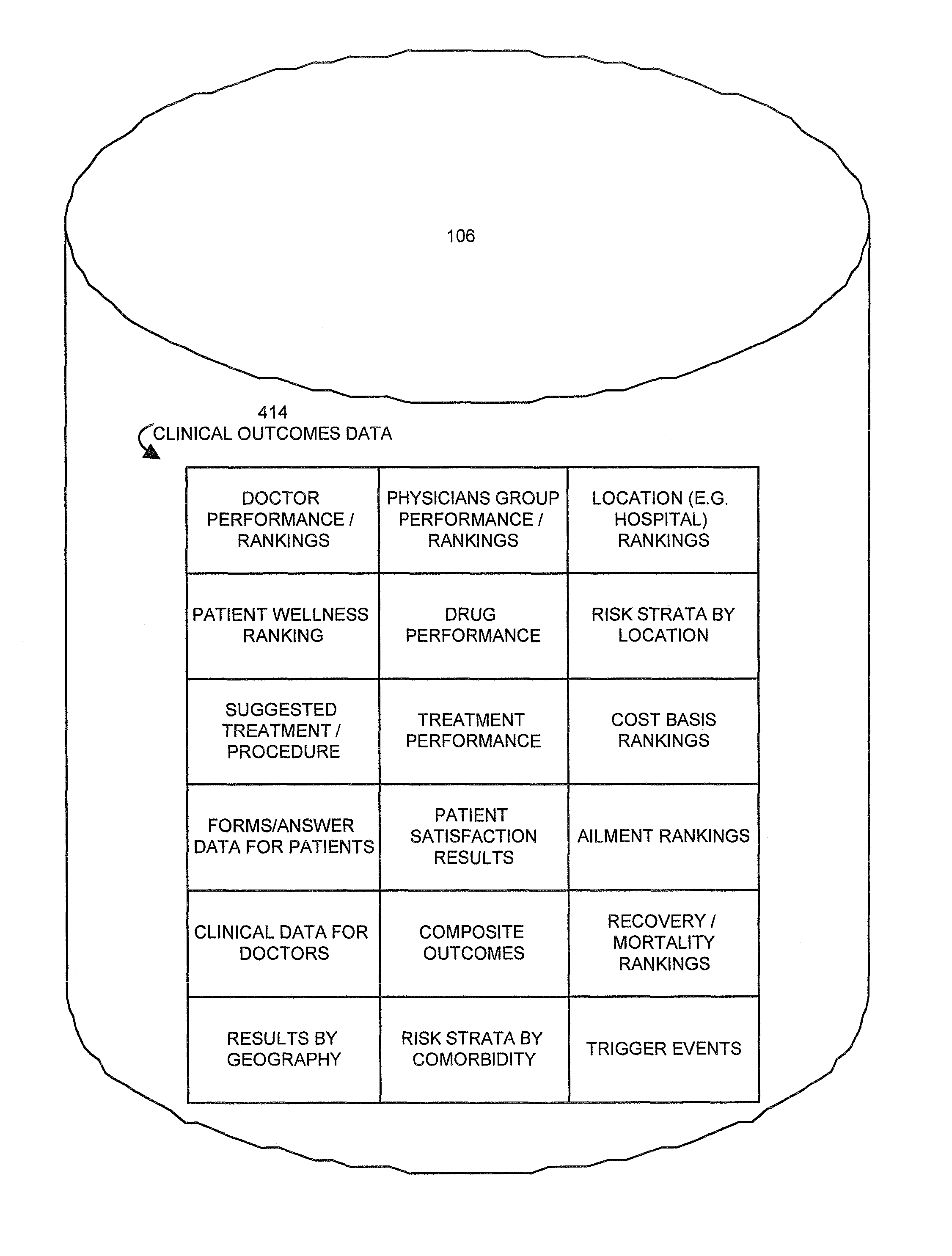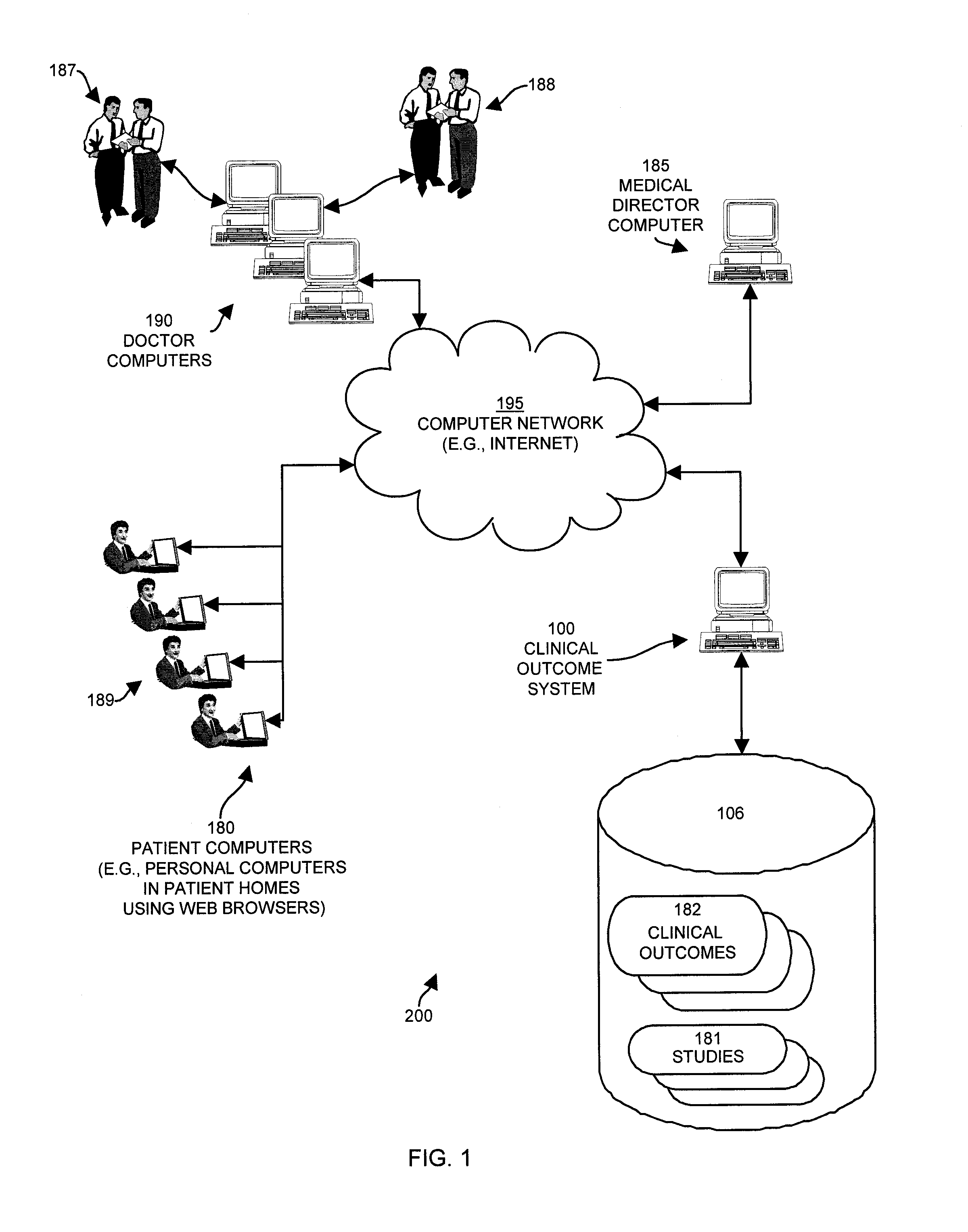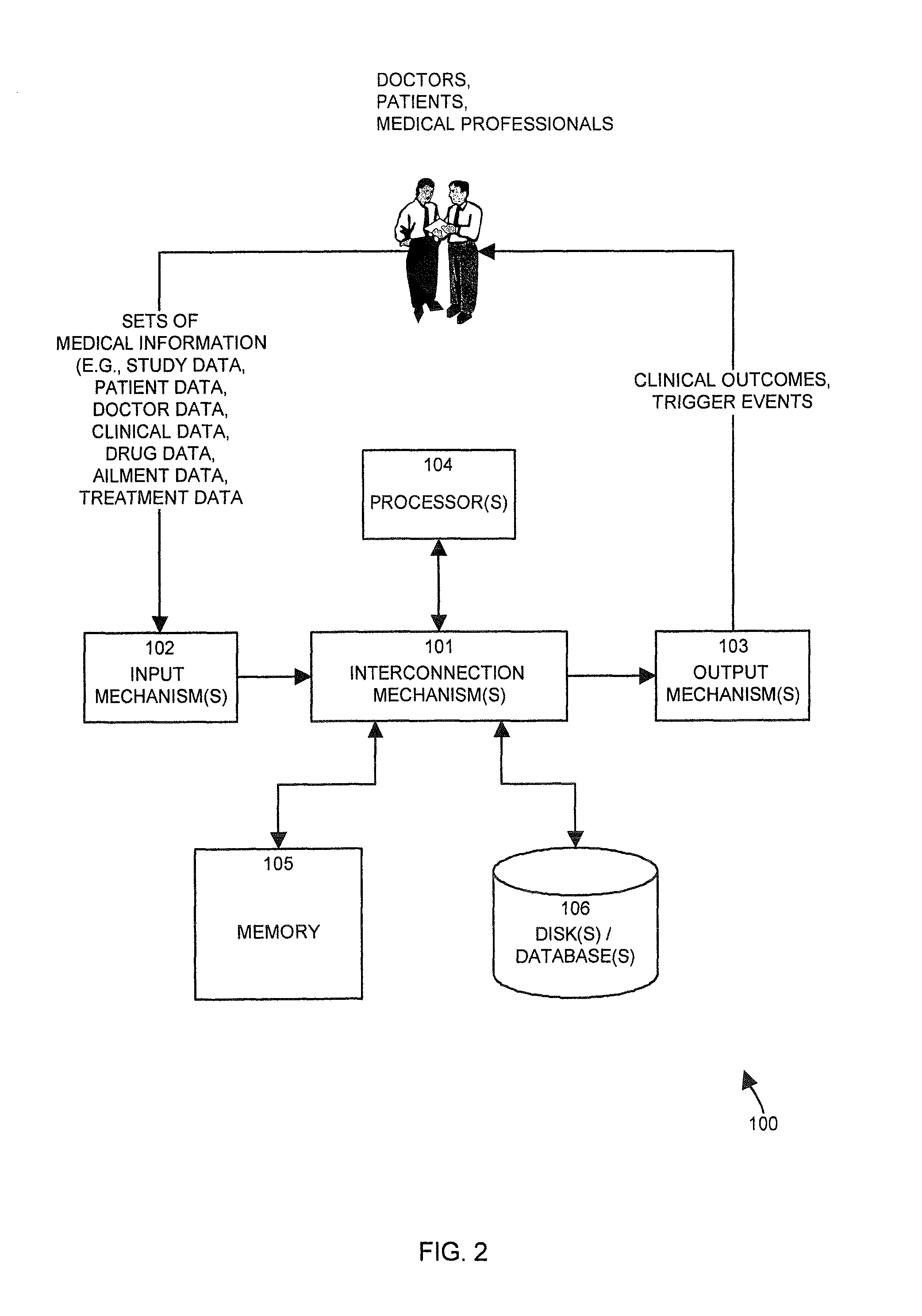Apparatus and methods for determining and processing medical outcomes
a technology of medical outcomes and apparatus, applied in the field of apparatus and methods for determining and processing medical outcomes, can solve the problems of large amounts of data remaining unrecorded, unanalyzed, and inconvenient to conduct medical outcomes research prior art techniques and methodologies
- Summary
- Abstract
- Description
- Claims
- Application Information
AI Technical Summary
Benefits of technology
Problems solved by technology
Method used
Image
Examples
Embodiment Construction
[0048]The present invention is directed to techniques providing a tool for the assistance and administration of medical research. FIG. 1 illustrates an example of a computer networking environment 200 configured to support operation of one embodiment of the invention. The computer networking environment 200, in this example, includes a computer network 195 which interconnects one or more doctor computers 190, one or more patient computers 180, a medical director computer 185, and a clinical outcome system 100 which includes a medical database 106 configured in accordance with the invention. A brief overview of the system of the invention and its operation will assist in understanding the discussion of more detailed embodiments presented later.
[0049]Generally, as illustrated in FIG. 1, the environment 200 allows doctors and other medical professionals to efficiently carry out medical outcome research according to techniques of the invention. In operation of the system 200, doctors (o...
PUM
 Login to View More
Login to View More Abstract
Description
Claims
Application Information
 Login to View More
Login to View More - R&D
- Intellectual Property
- Life Sciences
- Materials
- Tech Scout
- Unparalleled Data Quality
- Higher Quality Content
- 60% Fewer Hallucinations
Browse by: Latest US Patents, China's latest patents, Technical Efficacy Thesaurus, Application Domain, Technology Topic, Popular Technical Reports.
© 2025 PatSnap. All rights reserved.Legal|Privacy policy|Modern Slavery Act Transparency Statement|Sitemap|About US| Contact US: help@patsnap.com



